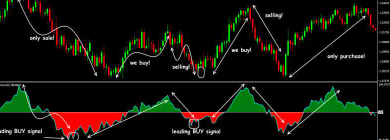The current landscape
The Reserve Bank of India (RBI) has historically been cautious about virtual digital assets. In 2018, the central bank imposed a ban that prohibited banks and financial institutions from facilitating VDA transactions. However, this decision was overturned by the Supreme Court in 2020, marking an important turning point for the VDA industry in India.
In 2022, India introduced a 30% tax on VDA profits and a 1% TDS (tax deducted at source) on all VDA transactions. While these measures provided some clarity, they also raised concerns about their impact on traders, startups and the overall market. The lack of a well-defined regulatory framework creates an air of uncertainty, which creates challenges for growth and can discourage international investors.
The role of regulation in driving adoption
A well-balanced regulatory framework is not only a necessity – it is an opportunity. Regulation can:
do you know
The world of cryptocurrencies is very dynamic. Prices can go up or down in a matter of seconds. Thus, having reliable answers to such questions is crucial for investors.
1. Protect investors: Clear guidelines can prevent fraud and scams, increasing confidence among both retail and institutional investors.
2. Enable innovation: Policies that encourage innovation can position India as a global hub for Web3 and blockchain technology.
3. Enhancing Global Competitiveness: A proactive regulatory approach can attract international VDA businesses and talent, boosting India’s economic growth.
Lessons from other jurisdictions
India can draw inspiration from countries that have successfully integrated VDA into their financial ecosystem:
● Singapore: Known for its VDA-friendly environment, Singapore has implemented a robust licensing framework that ensures compliance without stifling innovation.
● Japan: As one of the first nations to regulate VDA, Japan requires exchanges to register and comply with AML (anti-money laundering) guidelines.
● European Union: The EU’s Markets in VDA-Assets (MiCA) regulation is a model of comprehensive policymaking, addressing everything from investor protection to market integrity.
Recommendations for a balanced approach
India needs a collaborative and forward-looking regulatory framework to unlock the potential of the VDA ecosystem:
1. Collaborative Policy-Making: Regulators, policy makers and industry stakeholders should engage in ongoing dialogue to create inclusive and practical policies.
2. Focus on priorities: Regulations should prioritize KYC/AML compliance, tax clarity and innovation. Establishing a sandbox environment for VDA startups can accelerate the development of industry solutions.
3. Public Awareness Campaign: Citizens must be educated about the benefits and risks of virtual digital assets for informed adoption.
conclusion
India stands at a crossroads in its VDA journey. A proactive and balanced regulatory framework can enable countries to harness the transformative potential of blockchain technology while ensuring economic stability and investor protection. With decisive action, India can lead the global VDA revolution and strengthen its position as a tech and financial powerhouse.
(Disclaimer: Recommendations, suggestions, opinions and views given by experts are their own. These do not represent the views of Economic Times)
(You can now subscribe to our ETMarkets WhatsApp channel)





























